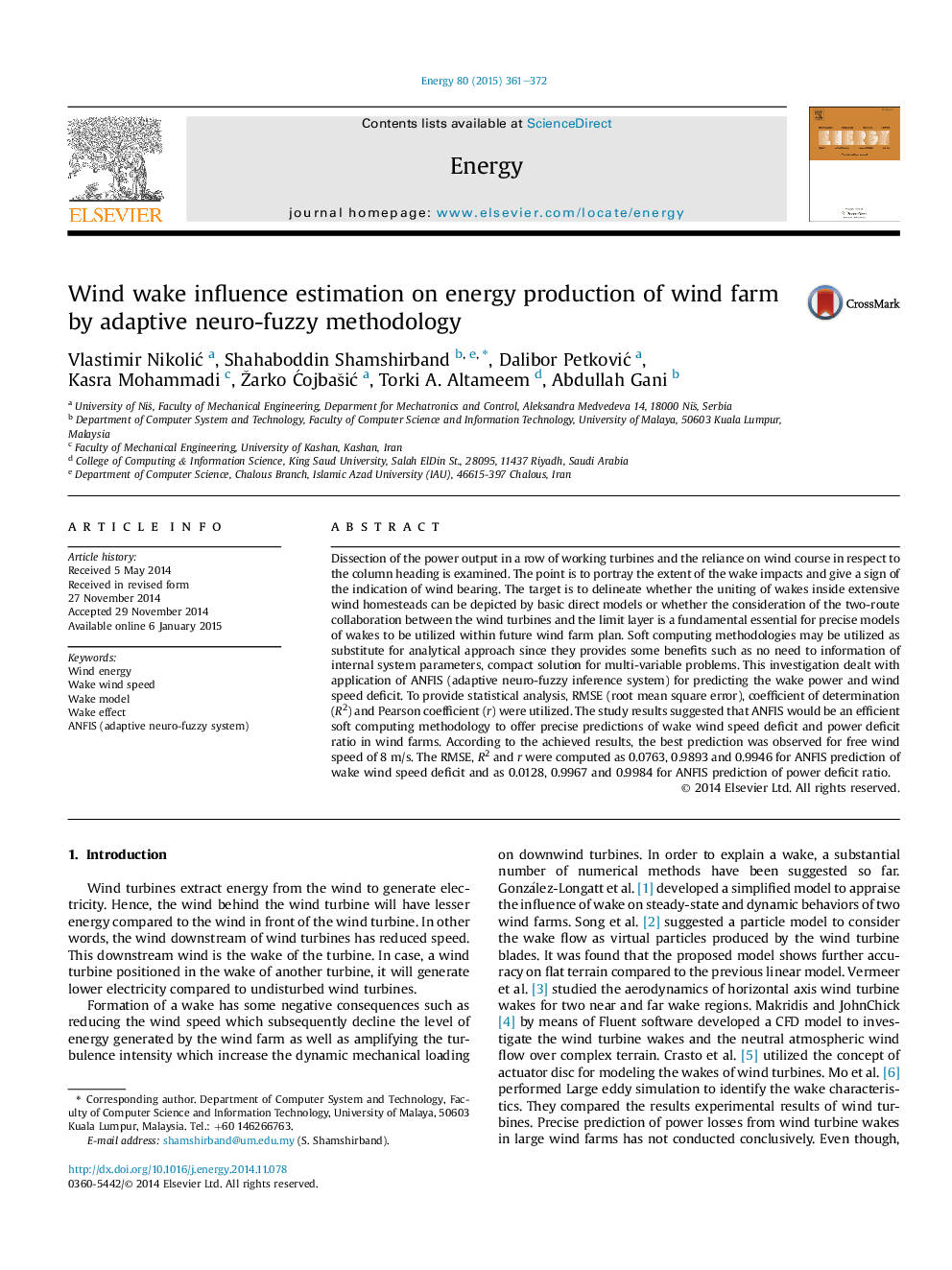| Article ID | Journal | Published Year | Pages | File Type |
|---|---|---|---|---|
| 1732015 | Energy | 2015 | 12 Pages |
•Aerodynamic interactions between the single turbines.•The effect of interactions between turbines.•ANFIS (adaptive neuro-fuzzy) estimator to estimate wake wind speed.•Estimation of wake wind speed and power deficit ratio.•Adaptive neuro fuzzy application.
Dissection of the power output in a row of working turbines and the reliance on wind course in respect to the column heading is examined. The point is to portray the extent of the wake impacts and give a sign of the indication of wind bearing. The target is to delineate whether the uniting of wakes inside extensive wind homesteads can be depicted by basic direct models or whether the consideration of the two-route collaboration between the wind turbines and the limit layer is a fundamental essential for precise models of wakes to be utilized within future wind farm plan. Soft computing methodologies may be utilized as substitute for analytical approach since they provides some benefits such as no need to information of internal system parameters, compact solution for multi-variable problems. This investigation dealt with application of ANFIS (adaptive neuro-fuzzy inference system) for predicting the wake power and wind speed deficit. To provide statistical analysis, RMSE (root mean square error), coefficient of determination (R2) and Pearson coefficient (r) were utilized. The study results suggested that ANFIS would be an efficient soft computing methodology to offer precise predictions of wake wind speed deficit and power deficit ratio in wind farms. According to the achieved results, the best prediction was observed for free wind speed of 8 m/s. The RMSE, R2 and r were computed as 0.0763, 0.9893 and 0.9946 for ANFIS prediction of wake wind speed deficit and as 0.0128, 0.9967 and 0.9984 for ANFIS prediction of power deficit ratio.
